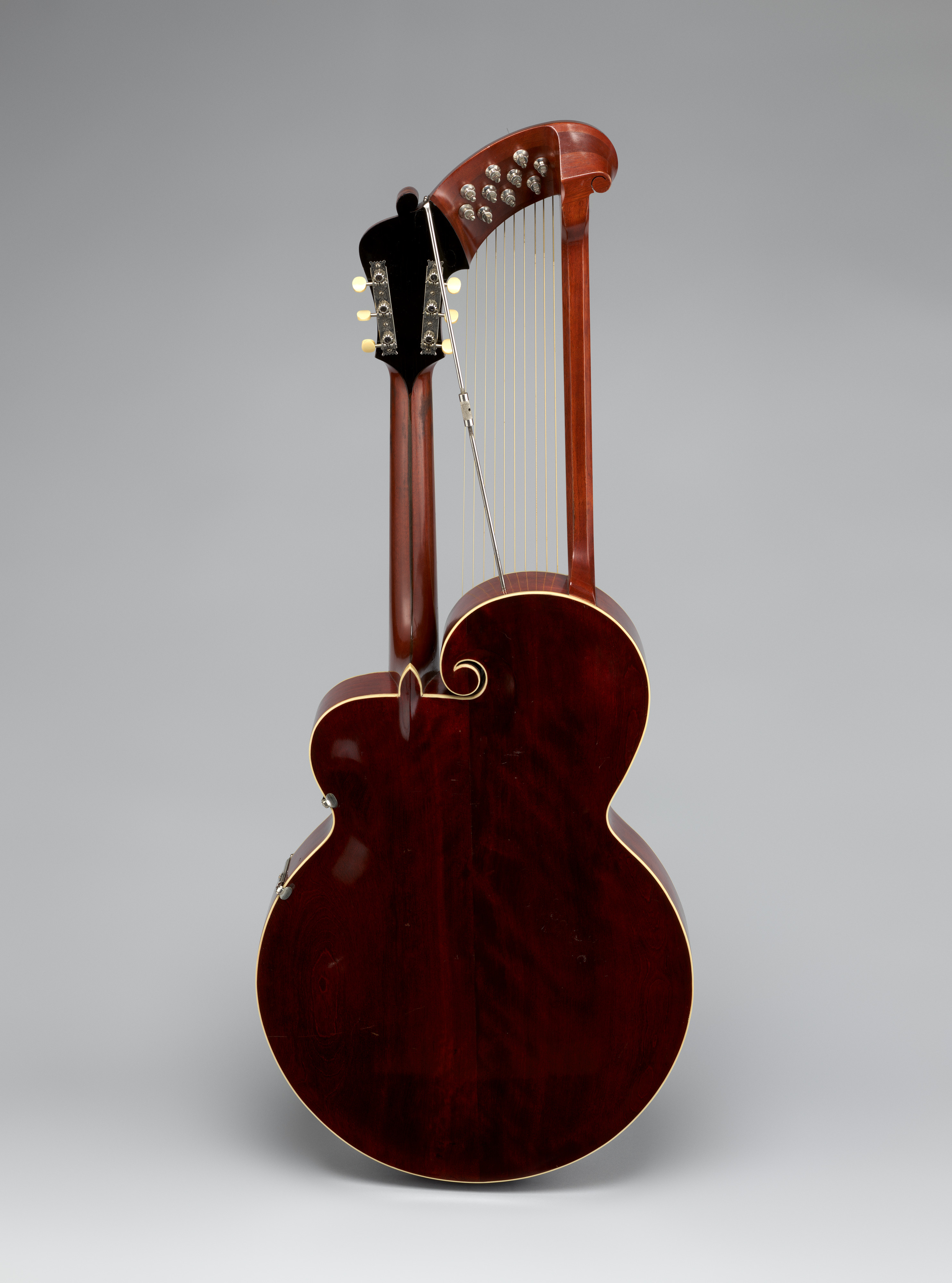Harp Guitar
Gibson Mandolin-Guitar Manufacturing Co., Ltd. American
Gibson U model harp guitar with a light to dark red sunburst finish, serial number 26084. The large body has a scroll on the upper left shoulder, corresponding to the scrolls found on the F series mandolins. The guitar has a carved, arched top and back, a design patented by Orville Gibson in 1898. Five businessmen bought the name and patent from Orville Gibson in 1902 and started The Gibson Mandolin-Guitar Manufacturing Co., Ltd. The model was introduced in 1902 and discontinued in 1939. The instrument has six strings over the fingerboard, and then another ten sub-bass strings tuned chromatically from A-sharp to G-sharp. The oval soundhole has a decorative ring of mother-of-pearl diamonds in black mastic. The front, back, and fingerboard are bound in ivoroid. The guitar neck, the enharmonic curve, and pillar, are made from mahogany. A metal bar reinforced the neck to the body. The fingerboard is made of ebony and ends at the sound hole. There are nineteenth nickel-silver frets with mother-of-pearl position dots on the fingerboard and upper edge of the neck. Floating bridge, double trapeze tailpiece, and raised pickguard with two metal supports. The paddle shaped peghead is veneered and inlaid with mother-of-pearl inlaid words "The Gibson."
Due to rights restrictions, this image cannot be enlarged, viewed at full screen, or downloaded.
This artwork is meant to be viewed from right to left. Scroll left to view more.



